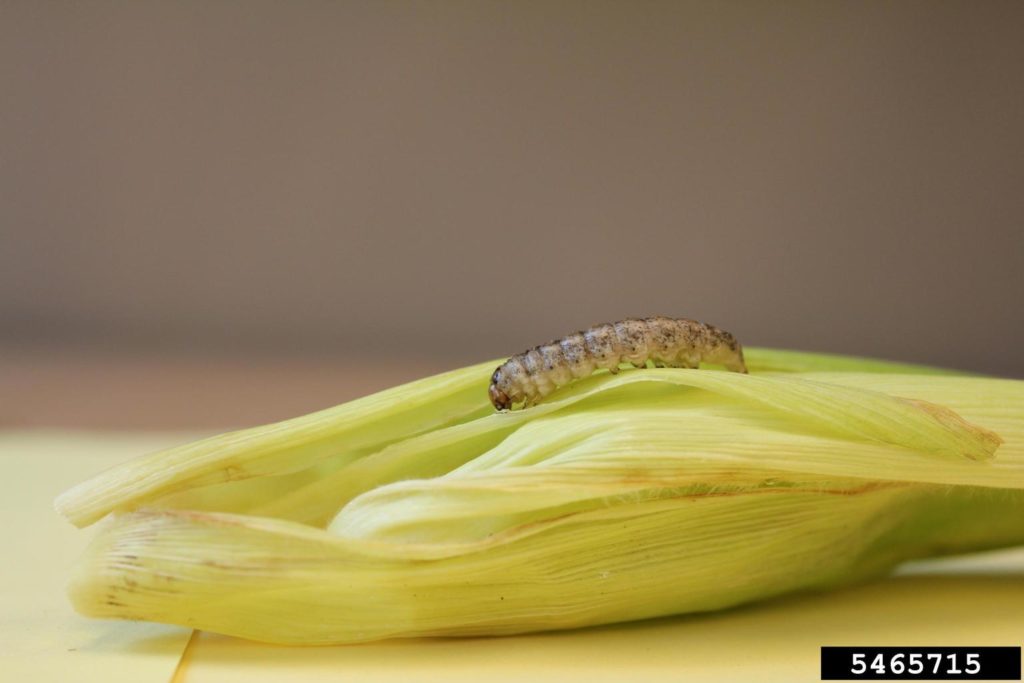Western Bean Cutworm: June - August
Selecting a county that is colored in on the map will show a graph of this year’s catches at the site.
Western Bean Cutwormis a native of North America but was not found in the Great Plains until 2004.
Only one generation is found per year. Moths will appear in early July and peak around mid-July. Egg masses, averaging 50 per mass, will be laid from July to August. Cornfields in the late whorl stage are preferred for laying eggs. The eggs can be found on upper surfaces of the leaf, often
There are six larval instars. The sixth is the easiest to find and is often feeding on mature ears. Unlike Corn Earworm, several caterpillars may be found on one ear as they are not cannibalistic. By the late summer/early fall, the sixth instar will drop to the soil to burrow and pupate in the following spring/early summer.
Management for this pest is difficult as larvae must encounter the insecticide or its residue before entering the corn plant’s ear. After larvae enter the ear, contact with insecticide is near impossible.
Only Bt corn hybrids containing the Cry1F gene offer effective control of WBC. This includes hybrids marketed under the Herculex I and the soon-to-be-registered SmartStax hybrids.

